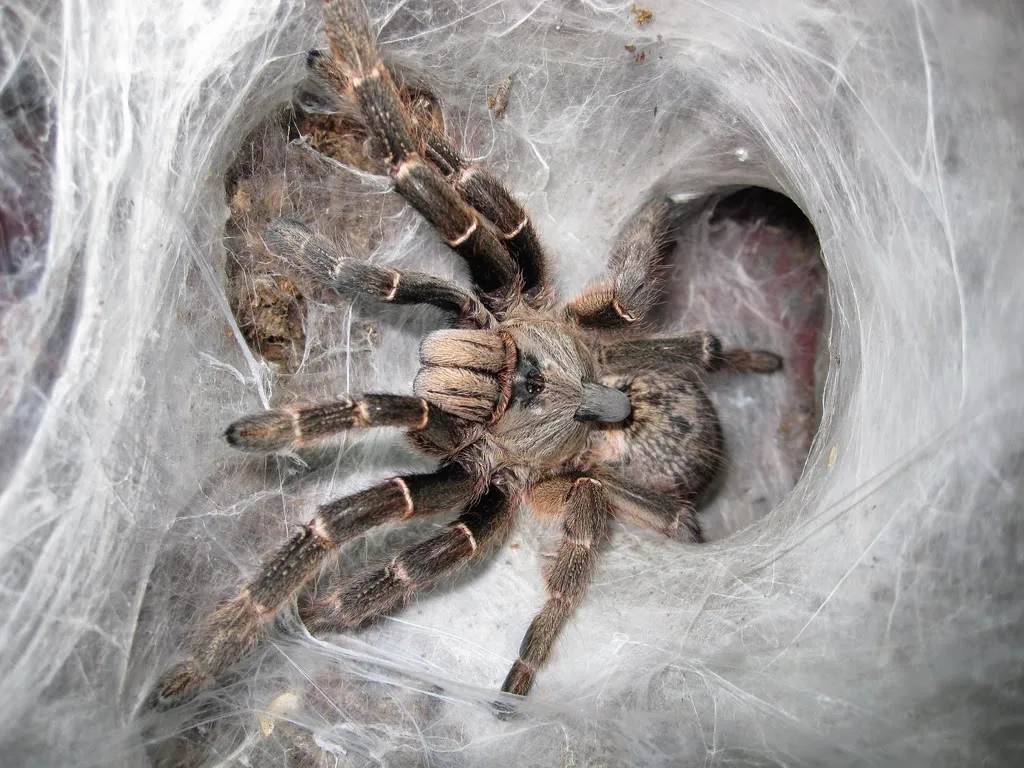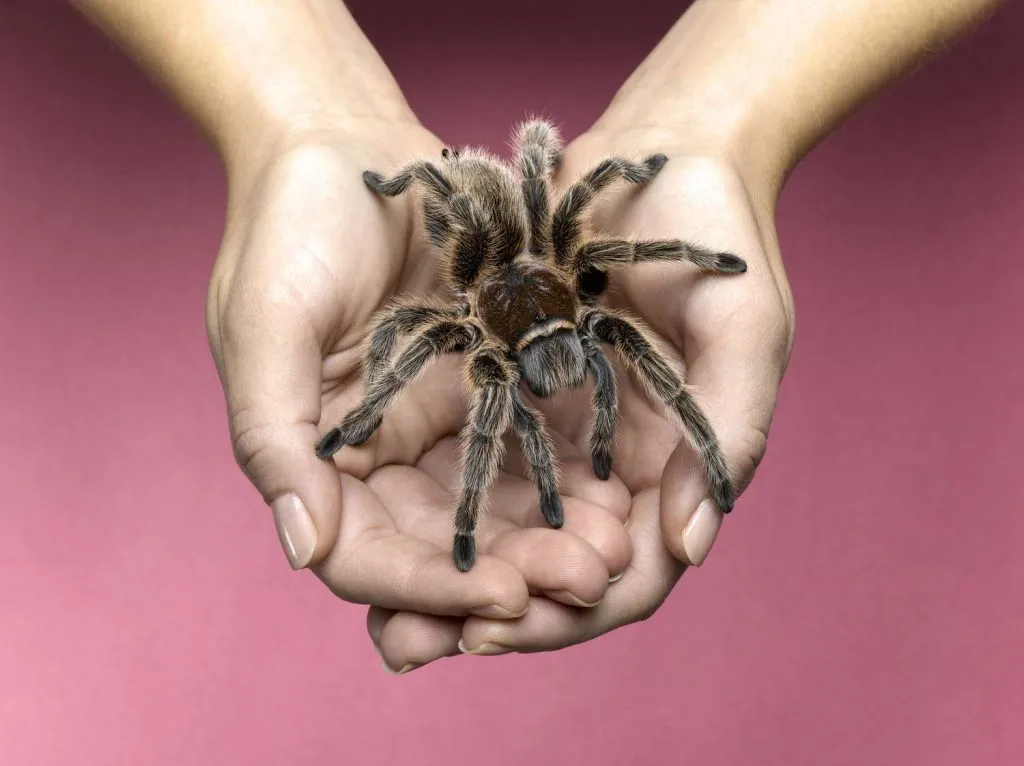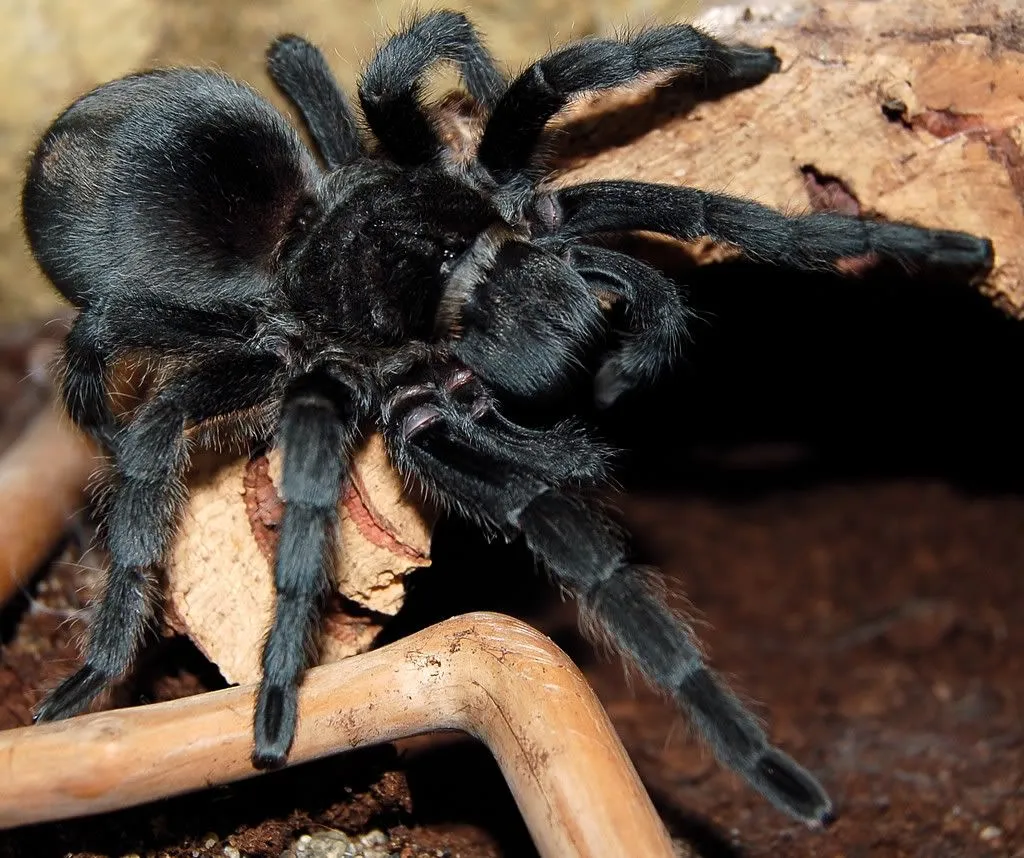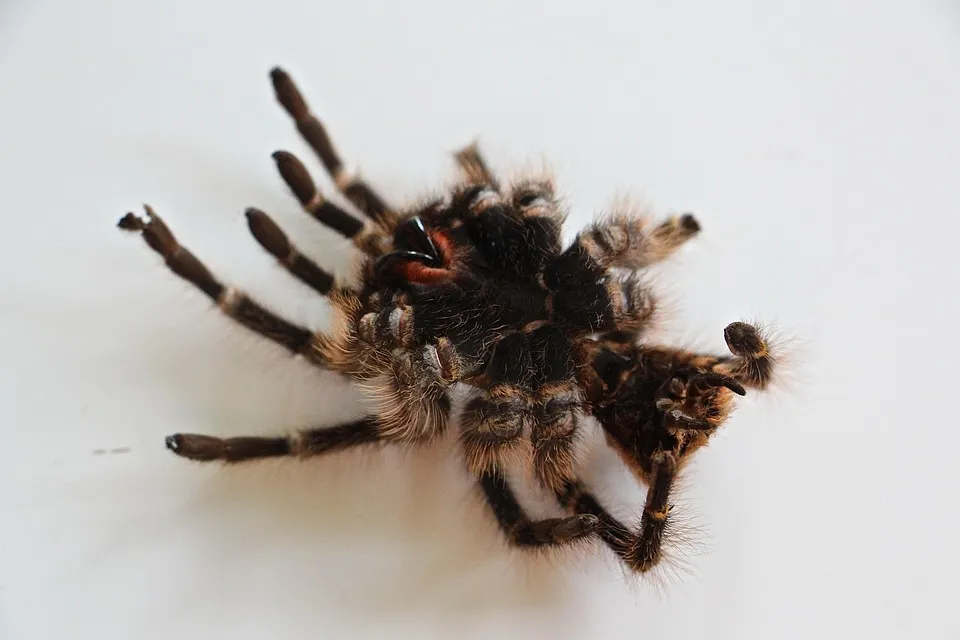Tarantula Care Guide Top 5 Tips
Tarantulas, with their captivating appearance and intriguing behaviors, have become increasingly popular as pets. However, responsible tarantula ownership goes beyond simply acquiring one; it involves understanding their specific needs to ensure they thrive. This comprehensive guide offers essential insights and actionable advice for providing exceptional care. From selecting the right species to creating an optimal habitat and understanding their dietary needs, we’ll provide you with the knowledge to become a successful tarantula keeper. Whether you’re a seasoned enthusiast or just starting, this guide will provide practical tips and information to help you on your journey to keeping happy and healthy tarantulas. These gentle giants can make fascinating companions, and with the right knowledge, you can enjoy the unique experience of owning a tarantula.
Choosing the Right Tarantula Species
The first step in successful tarantula ownership is selecting the appropriate species. Not all tarantulas are created equal; some are more docile, easier to care for, and better suited for beginners. Researching different species is important. Consider your experience level, the space you have available, and the amount of time you can dedicate to their care. Some popular beginner-friendly species include the Chilean Rose Hair tarantula and the Pinktoe tarantula. The key is to find a species that aligns with your lifestyle and expertise to ensure a rewarding experience for both you and your tarantula. Avoid the ones known to be aggressive or have potent venom. Learn about their natural habitats and the specific care requirements. Consider the size they grow to, as larger tarantulas need larger enclosures, and if you are allergic to any insect, be sure to wear gloves.
Consider Size and Temperament

Tarantula sizes can vary greatly, impacting enclosure needs. Larger species require more space and specialized setups. Temperament is another crucial factor, with some species being more docile and tolerant of handling than others. Researching the size they can attain, as well as their individual temperament traits is essential to ensure your safety and peace of mind. For beginners, starting with a smaller, more docile species is often recommended. Understanding these aspects helps to match the tarantula to your lifestyle and care capabilities, promoting both the tarantula’s well-being and your enjoyment of the pet. Assess the level of care you are able to provide, considering factors like feeding frequency, habitat maintenance, and the potential need for specialized equipment.
Researching Common Species
Before acquiring a tarantula, conduct thorough research on the species you’re considering. Learn about their natural habitat, dietary requirements, and specific care needs. This includes understanding their temperature and humidity preferences, as well as any special requirements. This in-depth research will enable you to replicate the ideal environment for your tarantula and meet their individual needs, promoting their health and well-being. Knowing the specific needs of a species can prevent potential issues, such as improper temperature leading to health problems or incorrect substrate causing molting difficulties. Consult with experienced tarantula keepers or online resources to gather reliable information and be prepared for the commitment.
Setting Up the Perfect Tarantula Habitat
Creating the ideal habitat is critical to your tarantula’s well-being. The enclosure should be appropriately sized for the species and provide ample space for movement and enrichment. A secure lid is essential to prevent escapes, and proper ventilation is important to maintain healthy air circulation. The choice of enclosure material will have a huge impact on the humidity levels and temperature. Clear enclosures allow for easy viewing and observation, while also being safe and durable. The habitat setup greatly affects the overall quality of life for your tarantula. A well-designed habitat minimizes stress, allowing your tarantula to thrive and exhibit its natural behaviors. Always remember that tarantulas do not like to be cramped.
Substrate Selection is Crucial

The substrate serves as the ground for your tarantula’s enclosure and it plays a crucial role in maintaining humidity levels, allowing burrowing, and creating a comfortable environment. The substrate type should be appropriate for the species and should mimic its natural habitat. For instance, a desert species might require a substrate mix of sand and coco fiber, while a tropical species needs a substrate that retains more moisture. The depth of the substrate is important, especially for burrowing species. Regularly check the substrate for cleanliness and replace it as needed to maintain hygiene. Choosing the right substrate will help your tarantula feel safe and secure and allow for their natural behaviors. The ideal substrate should be safe, non-toxic, and resistant to mold growth.
Providing Appropriate Temperature and Humidity
Tarantulas are ectotherms, meaning they rely on their environment to regulate their body temperature. Providing the correct temperature range is therefore critical for their health and survival. Use a thermometer and, if necessary, a heating source to maintain the optimal temperature. Humidity levels are equally important, as they affect molting and overall well-being. Use a hygrometer to monitor humidity and adjust the enclosure setup accordingly. Misting the enclosure, providing a water dish, or adjusting ventilation can help regulate humidity. Both temperature and humidity need to be consistent and within the correct ranges. Failure to meet these requirements can lead to health issues, such as difficulty molting, dehydration, and reduced activity levels. The ideal ranges will differ among species.
Essential Equipment for Tarantula Care
Setting up your tarantula’s habitat goes beyond the basics, with several essential pieces of equipment playing a crucial role in their care. The enclosure itself must be appropriately sized and secure, allowing for proper ventilation and accessibility. A reliable thermometer and hygrometer are necessary to monitor temperature and humidity levels, ensuring that the environment is optimal for your tarantula’s needs. A water dish is essential for providing a constant source of fresh water, and a shallow dish is often preferred to prevent drowning. Additional items such as hides, decorations, and substrate are also important for enriching the environment and fulfilling the tarantula’s natural behavioral needs. These will help you give your tarantula a happy life.
Feeding Your Tarantula Correctly

Proper feeding is fundamental to your tarantula’s health and longevity. The appropriate food sources include live insects such as crickets, mealworms, and roaches, which provide essential nutrients. The frequency of feeding depends on the species, age, and size of the tarantula. Young tarantulas and fast-growing species may need more frequent meals, while older or slower-growing tarantulas can be fed less often. The size of the prey should also be proportional to the size of the tarantula. It’s important to remove any uneaten prey items, as they can cause stress and potential health risks. You should also avoid overfeeding, as it can lead to obesity and health complications. Observing your tarantula’s feeding habits and behavior will help you fine-tune your feeding schedule.
Understanding Tarantula Dietary Needs
Tarantulas are carnivores, and their diets should be primarily composed of insects that offer essential nutrients to maintain optimal health. The variety of insects you feed can significantly impact the overall health of your tarantula. Crickets, mealworms, and roaches are commonly used, but it’s crucial to select prey that are free from parasites. Consider supplementing the diet with occasional treats such as pre-killed or frozen insects. It’s very important to avoid any insects treated with pesticides or chemicals. The specific dietary requirements will depend on the species, age, and size of the tarantula. Providing a balanced diet will help support healthy growth, energy levels, and the ability to molt successfully. Always make sure to remove any uneaten food promptly.
Feeding Frequency and Portion Sizes
The frequency and amount of food to give to your tarantula are essential factors in their care. The feeding frequency depends heavily on the age and species of your tarantula, as well as their metabolism. Younger, growing tarantulas typically need more frequent meals than adult tarantulas. The portion sizes should be proportional to the tarantula’s size and the size of the prey. Feeding too often or providing prey that’s too large can lead to health issues. Adjust the feeding schedule based on your tarantula’s behavior and appetite. Regularly observe your pet for signs of overfeeding or underfeeding, adjusting the feeding schedule as needed to ensure optimal health. Remember that tarantulas can go for extended periods without food, especially when preparing to molt.
Handling Your Tarantula Safely

Handling a tarantula can be a fascinating experience, but it needs to be done with care to ensure both your safety and the spider’s well-being. Some tarantula species are docile and can be handled with relative ease, while others are more defensive and prone to biting. Before handling, research the temperament of your tarantula species. Always wash your hands thoroughly before and after handling to prevent the transmission of any oils or chemicals. Handling should be done near a soft surface, in case the tarantula falls. It’s important to be calm and gentle during the handling process and to avoid any sudden movements that could startle the tarantula. Even if your tarantula is known to be docile, it’s best to keep the handling sessions short. It is always best to admire them from afar and consider them a pet that you do not need to handle.
Recognizing Signs of Stress
Understanding the signs of stress in your tarantula can help you address potential problems and ensure its well-being. Common signs of stress in tarantulas include excessive hiding, refusal to eat, increased aggression, and erratic movements. A tarantula that is constantly hiding may be feeling threatened or uncomfortable with its environment. Loss of appetite can indicate stress, illness, or environmental factors. Aggressive behavior, such as raising its front legs or showing fangs, is a clear sign of discomfort. By recognizing these signs, you can adjust the environment, correct the feeding habits, or seek professional advice to help your tarantula. Reducing stress is crucial to prevent health problems and encourage a calm, content pet.
Safe Handling Techniques
When handling a tarantula, always prioritize safety and follow specific techniques to minimize risks. Handling should only be considered if the species is known to be docile and if you are comfortable with handling it. Before handling, ensure your hands are clean and free of any perfumes or lotions. Handle the tarantula over a soft surface, such as a bed or a couch, to prevent injury in case of a fall. Allow the tarantula to walk onto your hand instead of grabbing it. Avoid any sudden movements or dropping the tarantula. Should you be bitten, remain calm and seek medical advice, as some tarantulas have venom that can cause adverse reactions. Never force the tarantula to do anything it doesn’t want to do, and keep handling sessions brief to reduce stress.
Maintaining Optimal Health and Hygiene

Maintaining optimal health and hygiene is essential to a tarantula’s well-being and longevity. The cleanliness of the habitat directly affects the health of the tarantula, and regular cleaning prevents the buildup of harmful bacteria and toxins. Providing clean water is also very important. By implementing these hygiene practices and monitoring your tarantula’s overall health, you can create an environment where it thrives. Watch for signs of illness, such as lethargy, loss of appetite, or changes in behavior. By monitoring and maintaining the hygiene, you are investing in the health and happiness of your tarantula.
Regular Habitat Cleaning
Regular cleaning is an integral part of maintaining a healthy tarantula habitat. The frequency of cleaning will depend on the species, size of the enclosure, and the substrate used. You should spot clean the enclosure daily, removing any uneaten food, fecal matter, and dead insects. Complete enclosure cleaning should be done regularly, usually every few months, depending on the substrate type and the species’ needs. Always replace the substrate during the full cleaning process, as it can harbor bacteria and waste products. While cleaning, make sure to clean any decorations inside the enclosure as well. This helps to prevent the buildup of harmful bacteria and parasites. Always wash your hands thoroughly before and after handling the habitat.
Identifying and Addressing Health Issues
Identifying and promptly addressing any health issues is a critical aspect of tarantula care. While these creatures are generally hardy, they can be susceptible to certain ailments. Look for signs of potential problems, such as changes in behavior, loss of appetite, or physical abnormalities. If you notice anything concerning, isolate the tarantula and consult with a veterinarian who specializes in exotic animals. Common health issues include parasites, mites, and infections, so proper preventative measures are essential. A well-maintained habitat, a balanced diet, and the prevention of stress are also important for keeping your tarantula healthy. Regular monitoring and quick responses to any health concerns will contribute to a long and fulfilling life for your pet.
